Top Blenders Reviewed: Find Your Perfect Match
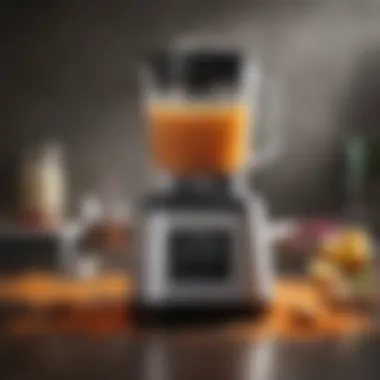
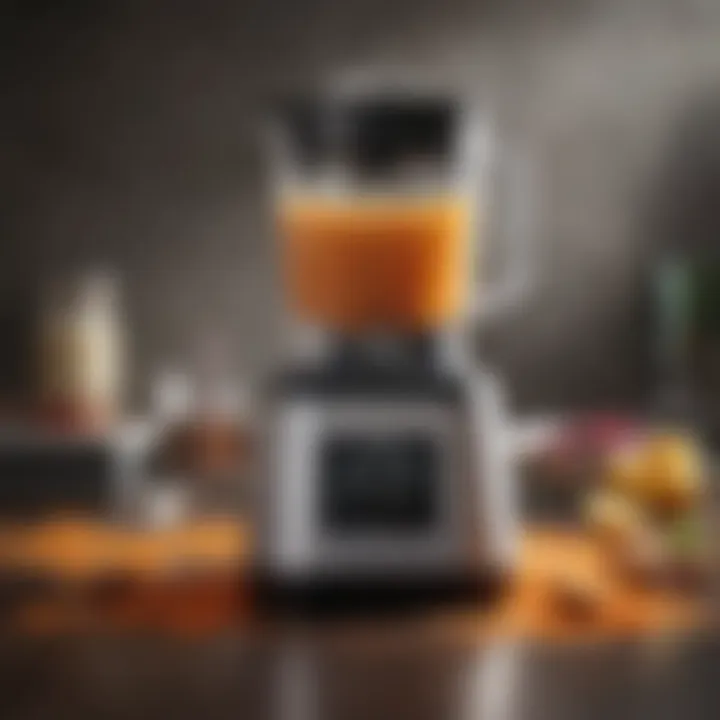
Intro
In a world where culinary exploration is on the rise, blenders have become essential tools in both home and professional kitchens. Understanding which blender to choose involves a multitude of factors including, but not limited to, performance, versatility, and ease of use. This guide presents an in-depth look at various blenders currently available on the market, highlighting their unique features and suitability for different blending tasks.
As we dive further into the categories of blenders, it becomes apparent that there is a significant variation between commercial and home models. Some designs focus on high performance, suitable for those who frequently create professional-quality drinks or soups. Others cater to everyday users, emphasizing user-friendliness and multifunctionality. Throughout this article, we will evaluate these factors, aiming to support readers in their purchasing decisions by explaining how each blender aligns with specific culinary needs.
Key Features of Blenders
Power and Performance
One cannot overlook the importance of motor power when considering a blender. Typically measured in watts, a higher wattage indicates a more powerful motor. Blenders like the Vitamix 5200 and the Blendtec Classic 575 demonstrate exceptional capabilities, managing tough ingredients like frozen fruits and fibrous greens with ease. This power creates smooth textures that elevate the final product.
Jar Material
Blender jar materials vary, chiefly between glass and plastic. Glass jars are favored for their sturdiness and resistance to staining, while plastic jars, often made from BPA-free materials, are lightweight and less likely to break. Users must balance durability with weight for optimal usability.
Blade Design
Blade design significantly influences a blender's efficiency. Blades that are crafted from stainless steel are typically more effective at resisting dullness. Unique blade shapes, such as those found in the Ninja Professional Blender, can enhance blending by creating a vortex that ensures all ingredients are consistently processed.
Ingredients Breakdown
Primary Ingredients
The choice of primary ingredients often defines the expected outcome of your blending. Common staples include fruits, vegetables, herbs, and liquids like water or nut milk. For those seeking smooth and creamy results, bananas and avocados are advantageous due to their natural textures.
Optional Ingredients
Optional ingredients add depth and nutrition to your blends. Consider adding protein powders, chia seeds, or oats for a nutritional boost. Adjusting flavors is also simple with various spices, honey, or natural sweeteners, providing versatility to your blending experience.
Essential Kitchen Tools
Besides having a quality blender, there are several kitchen tools to consider:
- Measuring cups and spoons for accurate ingredient proportions.
- A cutting board to prepare your ingredients before blending.
- A spatula to scrape down the sides of the jar for even blending.
Ending
Understanding the many facets of blenders can elevate your culinary experience. By examining key features and breaking down ingredient choices, this guide intends to simplify the decision-making process for food lovers. Different blending needs require different tools, so making an informed decision will undoubtedly enhance your kitchen capabilities.
Preamble to Blenders
Blenders have become essential tools in modern kitchens, playing a significant role in both home and professional culinary environments. They offer convenience and efficiency, allowing users to create a variety of recipes with less effort than traditional methods. This section explores the importance and contributions of blenders in contemporary cooking, setting the stage for understanding their diverse functionalities and capabilities.
The Role of Blenders in Modern Cooking
Blenders serve numerous purposes, making them indispensable for food preparation. They can easily transform solid ingredients into smooth mixtures, enabling the creation of sauces, smoothies, soups, and purees. The ability to blend quickly and uniformly enhances the texture and flavor of dishes.
Additionally, blenders save time in the kitchen. For busy individuals or families, the convenience of blending ingredients together in a matter of seconds is invaluable. A high-quality blender can also unlock culinary creativity, encouraging experimentation with diverse recipes. Moreover, nutritional considerations are vital; using fresh ingredients for smoothies or soups provides a healthy dietary option compared to processed alternatives. In essence, blenders not only simplify cooking but also promote healthier eating habits.
Types of Blenders and Their Uses
Understanding the different types of blenders is crucial when choosing the right one for specific needs. Each type offers unique features that cater to various culinary tasks.
- Countertop Blenders: These are commonly used in kitchens for general blending tasks. They usually offer multiple speed settings and powerful motors suitable for heavy-duty blending. They can easily handle ice, frozen fruits, and tough vegetables.
- Personal Blenders: Designed for single servings, personal blenders are smaller and often portable. They are ideal for quick smoothies or protein shakes, making them popular among fitness enthusiasts who prefer fresh drinks on-the-go.
- Immersion Blenders: Also known as hand blenders, immersion blenders allow you to blend ingredients directly in pots or bowls. This feature minimizes cleanup and is particularly useful for pureeing soups directly in the cooking pot.
- Commercial Blenders: Built for high-volume blending, commercial blenders are powerful and durable. They are typically found in cafes and restaurants, where they process large quantities of ingredients efficiently.
- Smoothie Makers: Though similar to personal blenders, these devices focus specifically on smoothie preparation. They often come with pre-set programs to optimize the blending process for various smoothie recipes.
By knowing the strengths and ideal uses of each blender type, potential buyers can make informed decisions about which model best fits their culinary lifestyle.
Criteria for Selecting a Blender
Selecting the right blender involves careful consideration of multiple factors. These criteria are crucial because they can greatly influence the blending experience and the outcome of various culinary tasks. Understanding these aspects allows consumers to make informed choices and invest in a blender that best suits their needs.
Performance Metrics


Performance metrics are vital when assessing blenders. They help determine how efficiently a blender can perform its tasks. Two main factors contribute to performance metrics:
Motor Power and Efficiency
Motor power plays a significant role in a blender's ability to handle tough ingredients. Higher wattage generally indicates stronger performance, which is important for tasks such as blending ice or hard vegetables. The efficiency of the motor not only affects speed but also its ability to maintain consistent output.
A blender with at least 1000 watts is often a popular choice for both home use and professional kitchens. This power enables it to achieve smoother textures and quicker blending times.
However, it is also critical to consider energy consumption. Some blenders are designed to maximize power output while minimizing energy usage. This efficiency can lead to lower electricity bills over time.
Blade Design and Material
Blade design and material significantly influence blending effectiveness. Stainless steel blades are common due to their durability and sharpness. They can slice through a variety of ingredients, leading to better blending results.
Unique blade designs, such as those with different angles or shapes, can enhance the blending process. This feature allows for improved circulation within the pitcher, providing a smoother and more consistent blend.
However, blade maintenance is also a factor. Dull blades can reduce performance and may need regular sharpening or replacement.
Usability Features
Usability features enhance the experience of using a blender and can greatly affect how frequently it is used.
Speed Settings and Programs
Having multiple speed settings is beneficial for various tasks, such as pureeing, chopping, or making smoothies. Programmable settings can simplify operations, allowing users to choose a specific function easily.
A blender with preset programs for common tasks, such as making smoothies or soups, adds convenience. Users can achieve desired results without needing to adjust settings manually each time.
Nevertheless, the presence of too many complex options can be overwhelming for some users. It’s essential to find a balance of features that enhances usability without complicating the operation.
Ease of Cleaning and Maintenance
Cleaning and maintenance are crucial for prolonging the lifespan of a blender. Models that are dishwasher safe or have self-cleaning functions are often preferred.
Ease of cleaning saves time and effort, making it more likely for users to maintain their appliances in optimal condition. Materials that resist staining, such as BPA-free plastics or glass, also contribute to this aspect.
On the downside, some blenders with intricate designs may be harder to clean. The assembly of certain parts can create hiding spots for food particles if not designed thoughtfully.
Durability and Warranty
Finally, durability is a significant consideration in selecting a blender. A well-built machine often provides better value, especially if it comes with a solid warranty. Consumers should check warranty periods to ensure they are protected against manufacturing defects. Brands that offer extended warranties are often committed to providing quality products.
In summary, the criteria for selecting a blender involve evaluating performance metrics, usability features, and durability. Understanding each aspect ensures you choose the right blender that meets your blending needs and preferences.
Top Blenders Overview
In a culinary environment that continually evolves, blenders have become integral tools for cooking enthusiasts and professionals alike. This section provides a comprehensive overview of the top blenders available today. It focuses on specific elements that distinguish these products, the benefits they offer, and the considerations users should keep in mind when selecting the right model.
High-Performance Commercial Blenders
Key Features and Specifications
High-performance commercial blenders are designed for rigorous use and demanding recipes. They often feature powerful motors, typically between 2 to 3 horsepower, allowing for quick and efficient blending. Key specifications include the types of materials used in the blending container, such as BPA-free plastics or glass, which can affect durability and ease of cleaning.
One defining characteristic is the variable speed control that allows users to adjust blending speed seamlessly. This flexibility is beneficial for achieving specific textures, whether for smoothies or more complex culinary applications. A unique feature of these blenders is often their programmed settings, which can simplify the handling of repetitive tasks, providing consistent results.
However, the upfront price of these devices is significantly higher, which may not suit every budget.
Target Audience and Use Cases
The target audience for high-performance commercial blenders mainly includes professional chefs, restaurants, and smoothie bars. These users require robust and reliable equipment that can handle large volumes of ingredients. A significant characteristic here is the emphasis on high capacity blending jars, which allow for preparing multiple servings at once.
The advantage of these blenders lies in their efficiency during busy service hours. However, a notable disadvantage is their size; these models can occupy more counter space, which could be a limitation in smaller kitchens.

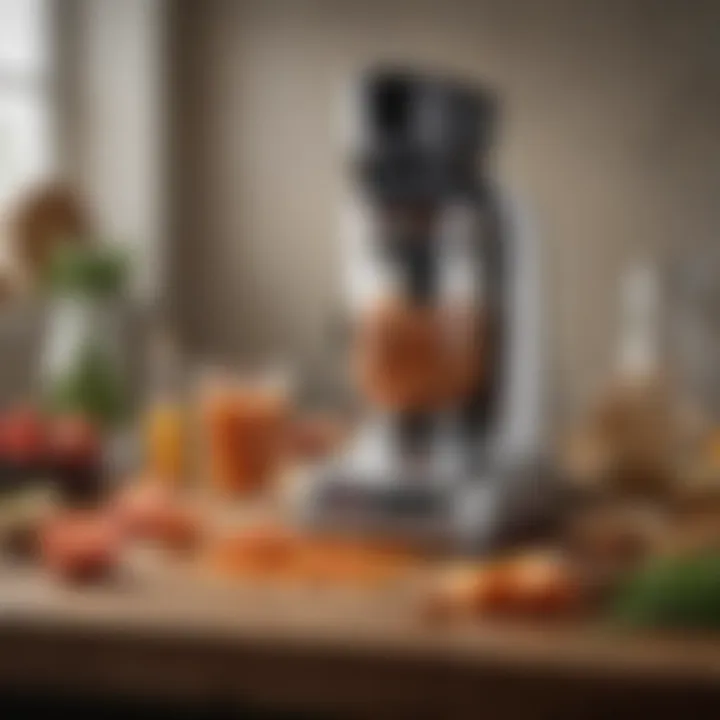
Versatile Personal Blenders
Compact Design Advantages
Versatile personal blenders cater specifically to users seeking convenience and space-saving designs. The compact nature of these units makes them practical for small kitchens or for individuals who prefer single-serving drinks. A major advantage is their lightweight design, which allows for easy storage and portability, enabling users to take them while traveling.
In addition, many compact models feature integrated blending cups that double as portable drinking containers. This uniqueness saves time and minimizes cleanup, as users can blend and drink from the same vessel. However, the downside might be a smaller capacity, limiting the amount of ingredients that can be blended at once.
Best Brands and Models
When it comes to personal blenders, brands like NutriBullet and Ninja are often considered leaders in the market due to their performance and reliability. These brands stand out for their user-friendly interfaces and robust motor power, which make them suitable for various blending tasks.
One unique feature that sets these brands apart is their blend-and-go capability, allowing users to blend directly in the cup and then attach a lid for transport. While these models offer exceptional convenience, they may not produce the same quality blends as larger commercial units.
Budget-Friendly Options
Value for Money
Budget-friendly blenders are ideal for consumers who prioritize functionality without high costs. A key characteristic of these models is their reasonable price, coupled with essential features that cover basic blending needs. Users can enjoy decent performance in smoothies, soups, and sauces without breaking the bank.
The unique aspect of these blenders is often the simplicity in their design, making them easy for any user to operate. While they may lack the advanced features of high-end models, many still provide satisfactory performance. The main disadvantage here can be their reduced lifespan due to lower-quality materials, which may not withstand heavy use over time.
Recommended Models
Some popular budget-friendly models include the Hamilton Beach Single Serve Blender and the Oster Personal Blender. These options stand out for their affordable pricing and adequate power, making them suitable for casual users or those just starting in culinary pursuits.
A unique feature to note is that many of these models come equipped with ** dishwasher-safe components**, which enhance usability. Nevertheless, they might not be the right choice for high-frequency users who need more durable options.
Choosing the right blender is crucial. Understanding your specific needs will guide you in making an informed investment in kitchen appliances.
By examining the features and defining the purpose behind each type of blender, consumers can make decisions that align with their culinary endeavors.
In-Depth Reviews of Popular Blenders
Understanding the nuances of various blender models is paramount in deciding on the right one for your kitchen. In-depth reviews not only provide a snapshot of a product's capabilities but also shed light on real-world performance and user experiences. This section aims to explore popular blenders, highlighting their strengths and limitations while providing a comprehensive outlook on what potential buyers should expect.
Professional Grade Blenders
Model A: Performance Evaluation
The performance of Model A is noteworthy. It boasts a powerful motor capable of reaching impressive speeds, which makes it suitable for tasks like crushing ice and blending tough ingredients. The robust nature of this blender ensures that it can handle heavy-duty use, making it a top choice in a professional setting. The key characteristic of Model A is its exceptional blending capacity. Users appreciate how quickly it processes ingredients into smooth textures, reducing preparation time significantly. This model's unique feature lies in its variable speed control, allowing for precise adjustments. While the powerful motor may increase noise levels, this is often a compromise for efficiency and performance in a professional environment.
Model A: User Feedback
User feedback on Model A often praises its efficiency and versatility. Many users express satisfaction with how well it handles various tasks, from making smoothies to soups. This blender is also recognized for its ease of use, with a straightforward interface that appeals to both novices and experienced cooks. The standout feature noted by users is the durability of its blades, which retain sharpness even after extensive use. However, some concerns do arise regarding its bulkiness, making storage a potential issue in smaller kitchens. Overall, the feedback paints a picture of a blender that delivers on its promises, despite some minor drawbacks.
Home Kitchen Powerhouses
Model B: Features and Comparisons
Model B is designed with the home cook in mind. It features user-friendly controls and a compact design, making it easy to integrate into different kitchen styles. The standout feature of Model B is its versatility, equipped with multiple blending settings that allow users to tailor the blending experience. Compared to similar models, it often outperforms others in terms of volume capacity and blending consistency. Additionally, the materials used in Model B's construction are of high quality, increasing its appeal as a reliable kitchen appliance. A disadvantage, however, could be the less powerful motor compared to professional models. This means while it is well-suited for everyday tasks, it may struggle with more demanding recipes requiring more power.
Model B: User Impressions
User impressions of Model B highlight its accessibility and performance for home use. Many users express delight with its capacity to create smooth blends with minimal effort. The easy clean-up process is another aspect that garners positive attention. Users appreciate the design that allows for quick disassembly and washing. Unique features such as preset programs for specific recipes are found to enhance the user experience. On the downside, some reviews mention that the blender’s speed might not be enough for certain tougher recipes, which may necessitate longer blending times. Nevertheless, overall, users find it to be a dependable partner in the kitchen.
Ease of Use and Functionality
Model C: Review Highlights
Model C is recognized for its simplicity and effectiveness. The review highlights emphasize its streamlined design that makes operation intuitive. One of the key characteristics of Model C is its lightweight construction, which aids in portability. This blender excels in creating smoothies and sauces due to its efficient blending capabilities. A unique feature is its noise reduction technology, making it a quiet option in comparison to other blenders. However, a drawback noted by some users includes a relatively small blending capacity, which may not meet the needs of larger families or gatherings.
Model C: Durability Assessment
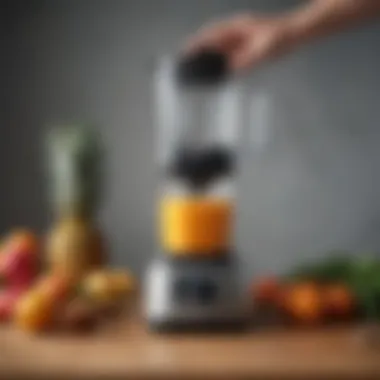
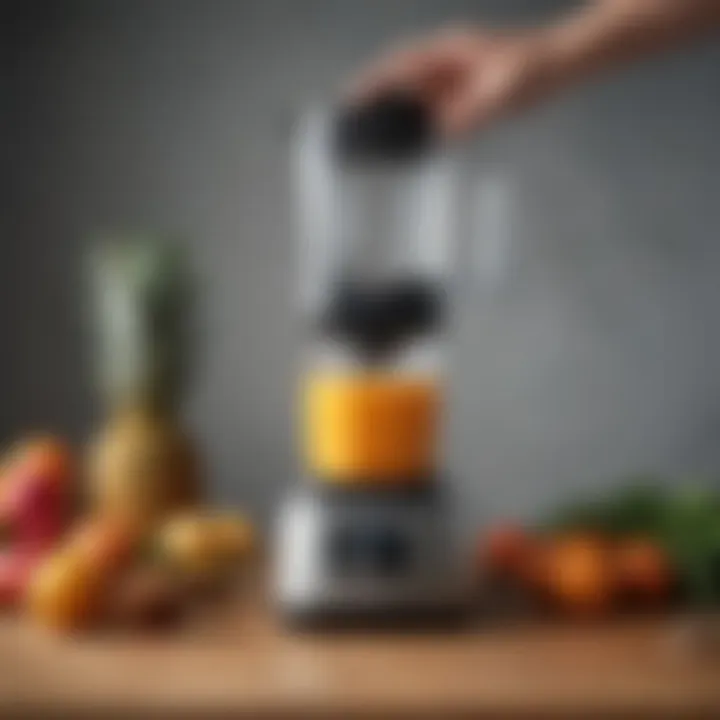
The durability of Model C is another focal point. Many users remark on its resilient construction, able to withstand daily use without showing signs of wear. The assessment of durability reveals that the materials used are not only robust but also designed to ensure longevity. Users can find comfort in knowing their investment will last. However, some users caution that while the exterior is sturdy, the components inside may be more vulnerable than expected, requiring careful handling. All in all, users regard this model as a well-balanced choice for those seeking a dependable and easy-to-use blender.
Maintenance and Care for Blenders
Maintaining and caring for your blender is essential for ensuring its longevity and optimal performance. Regular maintenance not only improves the efficiency of the blender but also guarantees safety during its operation. Neglecting basic care can lead to decreased performance, potential damage, and even health hazards due to improper cleaning. Understanding how to properly clean and maintain your blender can save you time and money in the long run, making it a wise investment.
Daily Cleaning Practices
Daily cleaning practices are crucial for keeping your blender hygienic and performing at its best. Here are some essential steps to follow:
- Rinse Immediately: After using your blender, always rinse the jar with warm water. This prevents residue from sticking and reduces the buildup of stubborn stains.
- Use a Mild Detergent: Apply a small amount of mild dish soap to the blender jar. Fill it halfway with warm water, secure the lid, and blend for about 30 seconds. This simple action cleans the blades and interior thoroughly.
- Manual Cleaning: For tough residue, use a soft sponge or cloth to wipe the exterior and the blades gently. Avoid abrasive cleaners or scrubbers that can scratch the surfaces, especially if you have a glass or high-quality plastic jar.
- Dry Properly: After cleaning, ensure both the jar and lid are completely dry before reassembling or storing. Moist conditions can promote mold growth and odors.
Using these daily practices can significantly improve the lifespan and quality of your blending experience.
Long-Term Maintenance Tips
Long-term maintenance tips ensure that your blender operates efficiently over the years. Here are some actionable suggestions:
- Regular Inspection: Check the blender's blades for wear and tear. Dull blades can hinder performance, making it harder to blend ingredients smoothly. If the blades appear damaged, consider replacing them.
- Avoid Overloading: Do not exceed the recommended capacity of your blender. Overloading can strain the motor, leading to malfunction or burnout.
- Store Properly: When not in use, store the blender in a dry place, away from direct sunlight. Keeping it covered is also a good idea to prevent dust accumulation.
- Maintain Cord and Plug: Inspect the power cord and plug for any damage. A frayed cord can pose a safety risk, so replace it if necessary.
- Professional Servicing: If your blender shows signs of irregularities, such as unusual noises or overheating, consider seeking professional servicing. This can prevent more serious issues down the line.
Following these steps helps your blender function reliably for years. Regular maintenance not only saves money but also maximizes your blending experience.
By paying attention to daily cleaning practices and long-term care, you can maintain your blender’s performance and longevity. Investing time in maintenance yields significant benefits for both the appliance and your culinary creations.
Closure and Recommendations
In this article, the conclusion and recommendations section serves as a crucial component for readers who are looking to summarize their learning and make well-informed decisions regarding the selection of blenders. This segment distills the knowledge acquired in prior sections and helps readers reflect on their specific blending needs.
By recapping key factors such as performance, usability, and durability, readers can better understand how every aspect influences their buying choices. It is essential for any consumer to not only grasp the technical specifications but also to recognize which elements align best with their unique kitchen demands.
Moreover, the recommendations provided here guide readers toward products that are highly rated and popular among users, allowing for confident purchasing. The insights shared in this section have the potential to transform a simple appliance choice into a well-thought-out acquisition that enhances the cooking experience.
Summarizing Key Factors
The importance of key factors cannot be overstated when selecting a blender. Key aspects include but are not limited to:
- Motor Power: This dictates blending speed and efficiency.
- Blade Quality: The material and design affect blending consistency.
- User-Friendliness: Features like ergonomic design and intuitive controls can enhance the overall experience.
- Warranty and Support: Ensures peace of mind regarding any manufacturing defects and provides support when needed.
Together, these factors build a framework that helps potential buyers orient themselves towards the blender that meets their expectations most closely.
Final Recommendations
Best Overall Stands Out
The best overall blender often combines high performance, usability, and exceptional durability. For instance, the Vitamix 5200 is widely recognized for its powerful motor and versatility. It can handle various tasks ranging from making smoothies to creating hot soups due to its friction heat. Its robust construction contributes to its reputation as a long-lasting tool in any kitchen. This adaptability and reliability position the Vitamix 5200 as a top choice for both amateur cooks and culinary professionals alike.
A unique feature of this model is its variable speed control, which allows for precise texture adjustments. This is particularly beneficial for users looking for consistency in their culinary creations, making it a strong contender in the blender market.
Consideration for Specific Needs
Different users may have varied requirements based on their cooking styles or kitchen space. For example, individuals seeking compact solutions often benefit from the NutriBullet Pro. This model excels in delivering quick blends with a smaller footprint, making it ideal for those who have limited counter space. Its ease of use and fast cleanup contributes to its popularity.
A unique feature of the NutriBullet Pro is its nutrient extraction capability, which maximizes the health benefits from fruits and vegetables. This advantage appeals significantly to health-conscious consumers but may pose challenges for those needing heavier-duty performance for more complex recipes.
Frequently Asked Questions
The inclusion of a Frequently Asked Questions (FAQ) section in this article is crucial for addressing the uncertainties that potential blender buyers may have. This section helps demystify the features and functionalities that are often confusing for many. Blenders can vary significantly in terms of performance and applications, leading to a variety of inquiries from consumers. Understanding these queries can significantly impact buying decisions, providing clarity and ensuring satisfaction with the chosen product.
A well-structured FAQ not only equips readers with immediate answers but enhances their overall confidence in making informed decisions. Potential buyers benefit from information related to common concerns, empowering them to choose a model that suits their culinary requirements. Moreover, addressing specific misconceptions can serve to straighten out the confusion surrounding blender technology, usage tips, and maintenance routines.
Common Blender Queries
- What is the difference between a personal blender and a professional blender?
Personal blenders are typically compact and designed for everyday use, perfect for individual servings. In contrast, professional blenders are robust, handling larger quantities and tougher ingredients, making them suitable for heavy kitchen use. - Can I blend hot liquids in all blenders?
Not all blenders can withstand high temperatures. Always check the manufacturer’s guidelines to avoid damaging the appliance or causing safety hazards. - How often should I clean my blender?
It's recommended to clean the blender after each use to prevent residue buildup and maintain hygiene. - What should I do if my blender is smoking?
If a blender emits smoke, immediately unplug it and stop using it. This can indicate motor overheating or an electrical issue. Consult the warranty or a professional for repairs. - Are all blender blades dishwasher safe?
Many blenders feature dishwasher-safe blades. However, always refer to the product manual for specific cleaning instructions to ensure longevity.
Expert Answers and Insights
An expert voice can elucidate many of the more intricate aspects of blenders. Here are some insights from industry professionals and culinary experts that answer common questions and more.
"Choosing the right blender often comes down to understanding your needs. If you prioritize portability, a personal model works best. But for serious cooking, invest in a professional-grade blender with a powerful motor."
- Understanding Wattage:
Experts agree that wattage significantly influences performance. Higher wattage indicates better blending power, making it essential for those who plan to make smoothies or soups. - Blender Versatility:
A versatile blender can do more than just mix. Experts suggest looking for models that can puree, chop, or crush ice, expanding culinary possibilities. - Material Matters:
The material of the blender pitcher also affects durability and blender performance. Glass is generally heavier but doesn’t retain odors, while plastic is lighter and more practical for handling.







